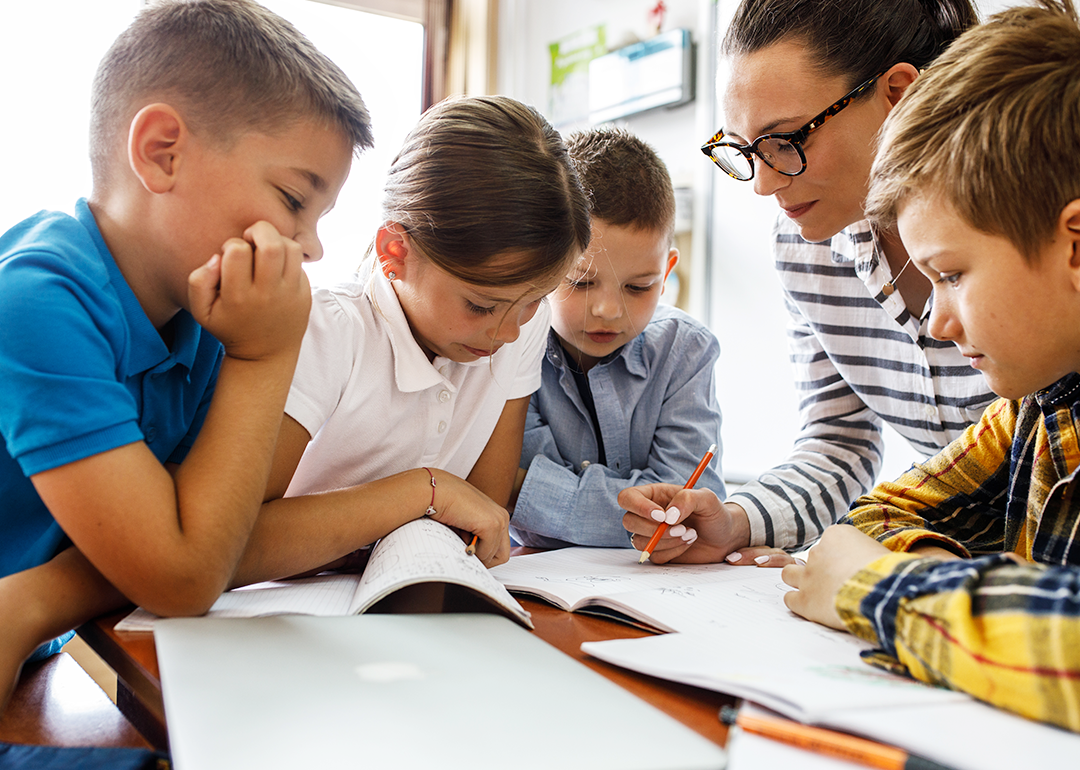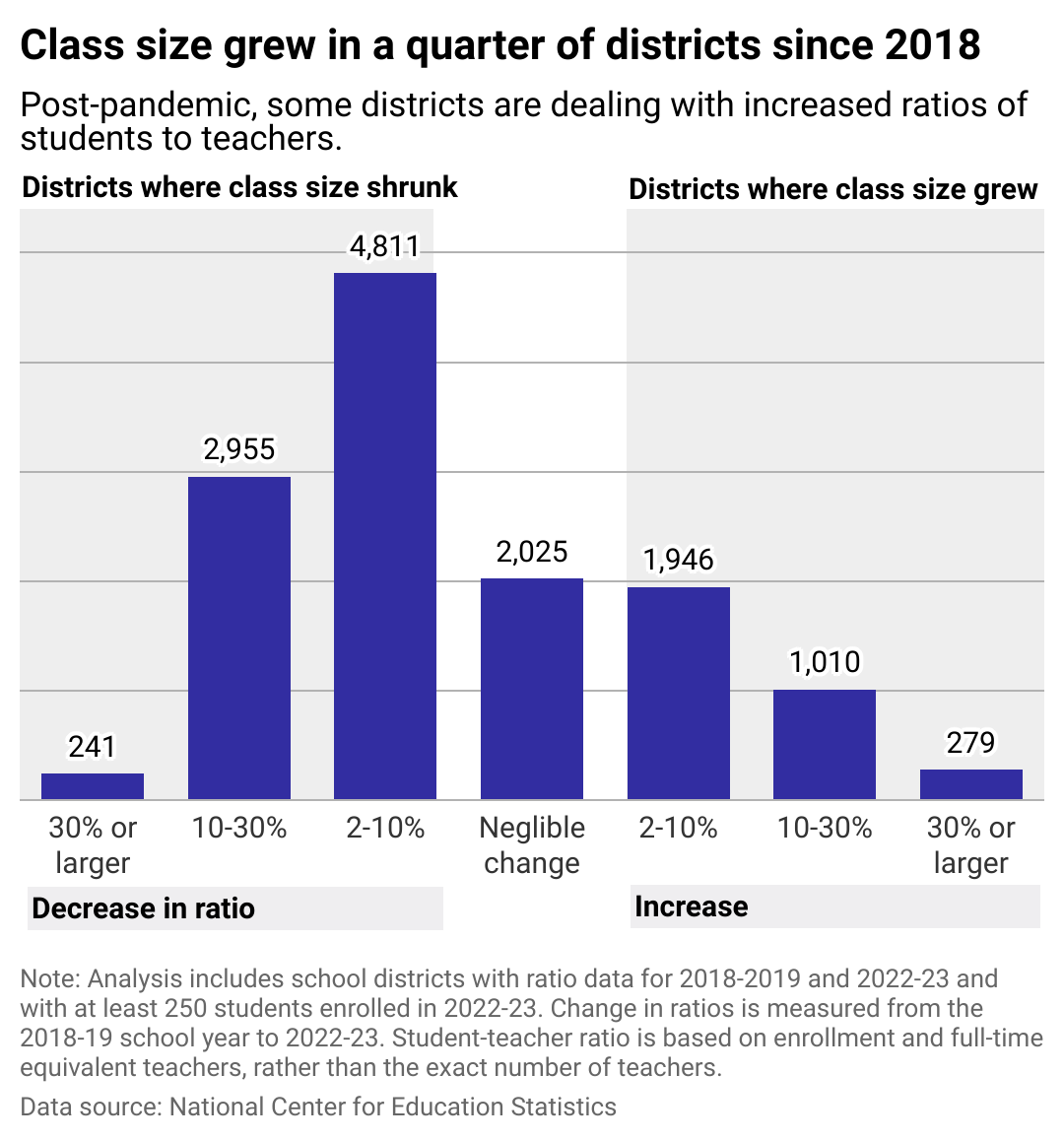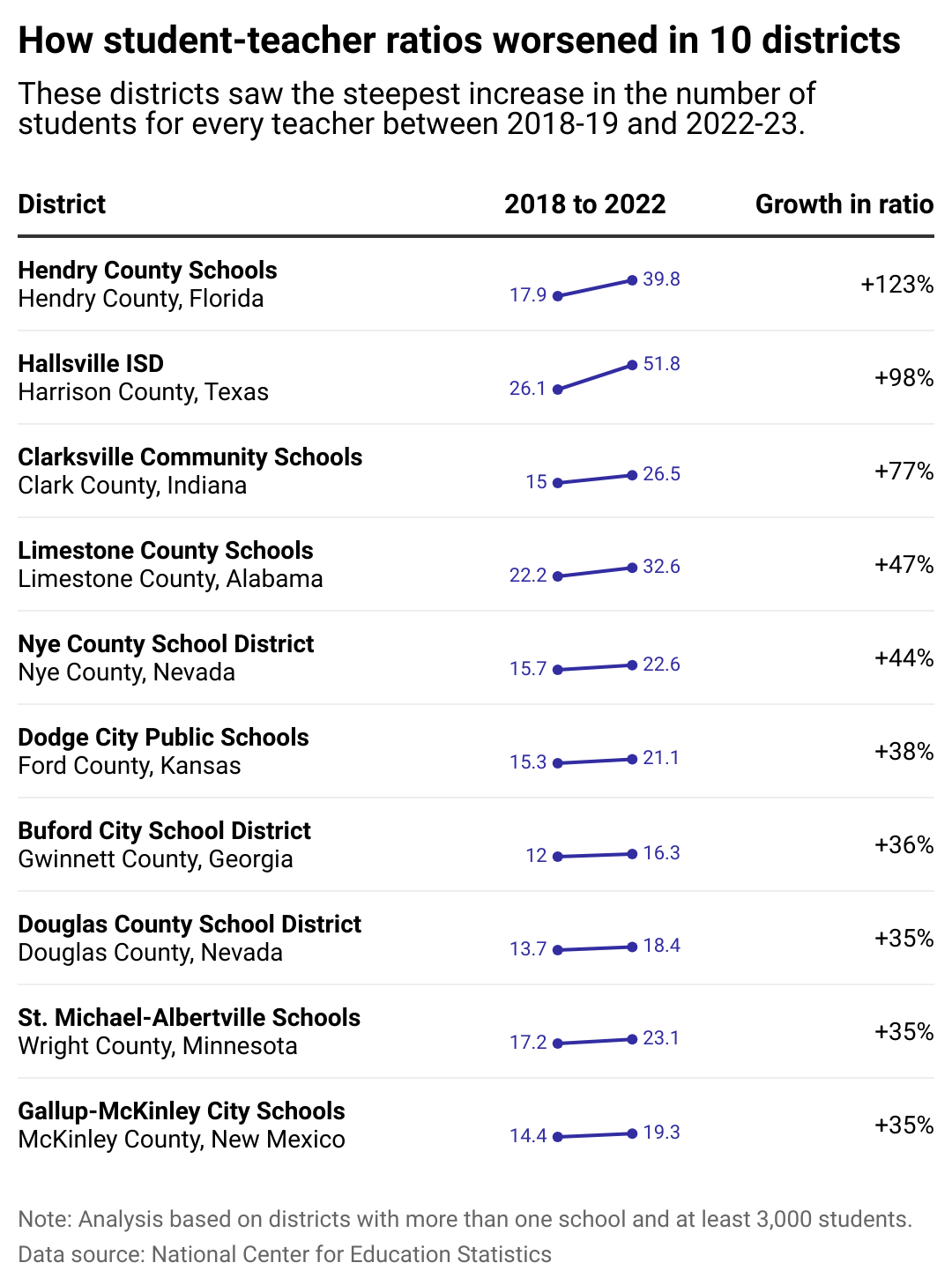
Districts where student-teacher ratios are still behind pre-pandemic levels
This story originally appeared on TeacherCertification.com and was produced and distributed in partnership with Stacker Studio.
Districts where student-teacher ratios are still behind pre-pandemic levels
In one-third of all school districts, the number of students per teacher is getting higher. Some states are grappling with ratios as high as nearly 40 students for every teacher, according to data from the National Center for Education Statistics.
Nationally, the ratio is 15.4 students for every teacher, which aligns with the decades-long student-to-teacher ratio of 16 students for every teacher. Since the COVID-19 pandemic, some school systems are dealing with larger class sizes and fewer teachers to teach them, hurting the quality of education and overwhelming educators.
TeacherCertification.com used data from the NCES to explore how student-teacher ratios have changed between the last full school year before the pandemic (2018-19) and the latest year with data available (2022-23). Teachers are measured as full-time equivalents, meaning the count is based on hours worked rather than the raw number of employees. School districts with fewer than 250 students in 2022-23 are not included in the analysis as the ratios of smaller districts are more volatile when teacher count changes.
Studies show that smaller class sizes and lower student-teacher ratios create better learning environments and have a positive long-term effect. For instance, students who had small classes from kindergarten to third grade increased their odds of graduating from college by 80%, according to a National Council of Professors of Educational Administration policy brief on class-size policy from 2012. For students from low-income homes, three years of small classes increased graduation for college by 67%; graduation rates for poor students with three or more years of small classes were at least equal to higher-income pupils, the NCPEA brief said.
Teacher vacancies since the pandemic forced school districts to overfill classrooms, which hurts student-to-teacher ratios; incorporate virtual learning, even though students are proven to learn better in person; and use permanent substitutes, who may not be as skilled as pre-pandemic substitutes. Special education and STEM teachers are needed the most.

Low salaries, lack of support keep potential teachers away
Despite too few teachers and plenty of job openings, employment numbers have remained relatively flat since 2021. That's due in part to salaries not keeping pace with demand. In addition, fewer college students are choosing education as a major, hurting the talent pipeline.
Fed up with large classes and waning support, some school teachers have started to strike or lobby state governments for better working conditions.
Teachers in Columbus, Ohio—the largest school district in the Buckeye State—went on strike in the fall of 2022 partly to get class sizes reduced. Oregon teachers also went on strike around the same time, reaching an agreement that certain class-size thresholds would equate to additional compensation: If a kindergarten teacher has a target of 18 students and ends up with 24, for example, they could get an annual base salary increase.
Last year, Minnesota legislators voted to include staffing ratios in public schools in collective bargaining discussions.

Districts with high instances of poverty continue to bear the brunt of understaffing
Districts with high instances of poverty continue to bear the brunt of understaffing.
For the current school year, 45% of all public schools report feeling understaffed. That metric represents a slight improvement from the previous year's 53%, according to the NCES' School Pulse Panel. However, in high-poverty neighborhoods, 57% still grapple with understaffing, mirroring last year's levels.
In Florida's Hendry County, the student-to-teacher ratio is the highest in the U.S. The county also has 25% poverty rate—106% higher than the U.S. average. Population growth in the area is only exacerbating student-to-teacher ratios. Its local high school, LaBelle High School in Port LaBelle, Florida, was designed for 1,000 students but now has 1,400. Because the county has so many new students, it has brought in portable classrooms to accommodate the growth.
Nevada last year topped the nation with teacher shortages caused by low pay and pupil growth.
For the state to fix the problem, 9,800 more teachers need to be hired, which would cost the state $800 million, according to a 2021 Nevada Department of Education study.
Story editing by Nicole Caldwell. Copy editing by Kristen Wegrzyn.



